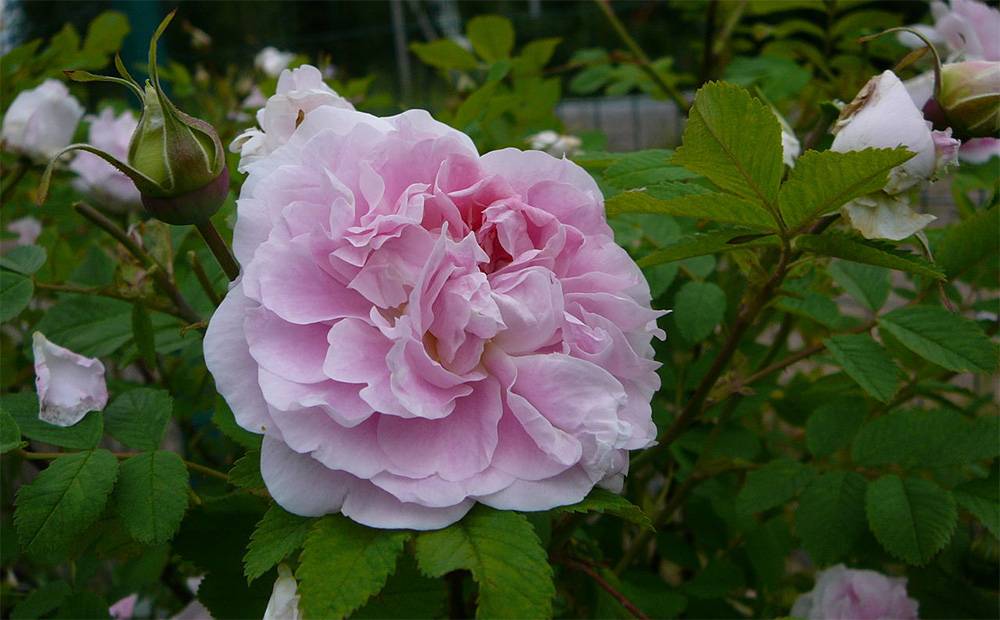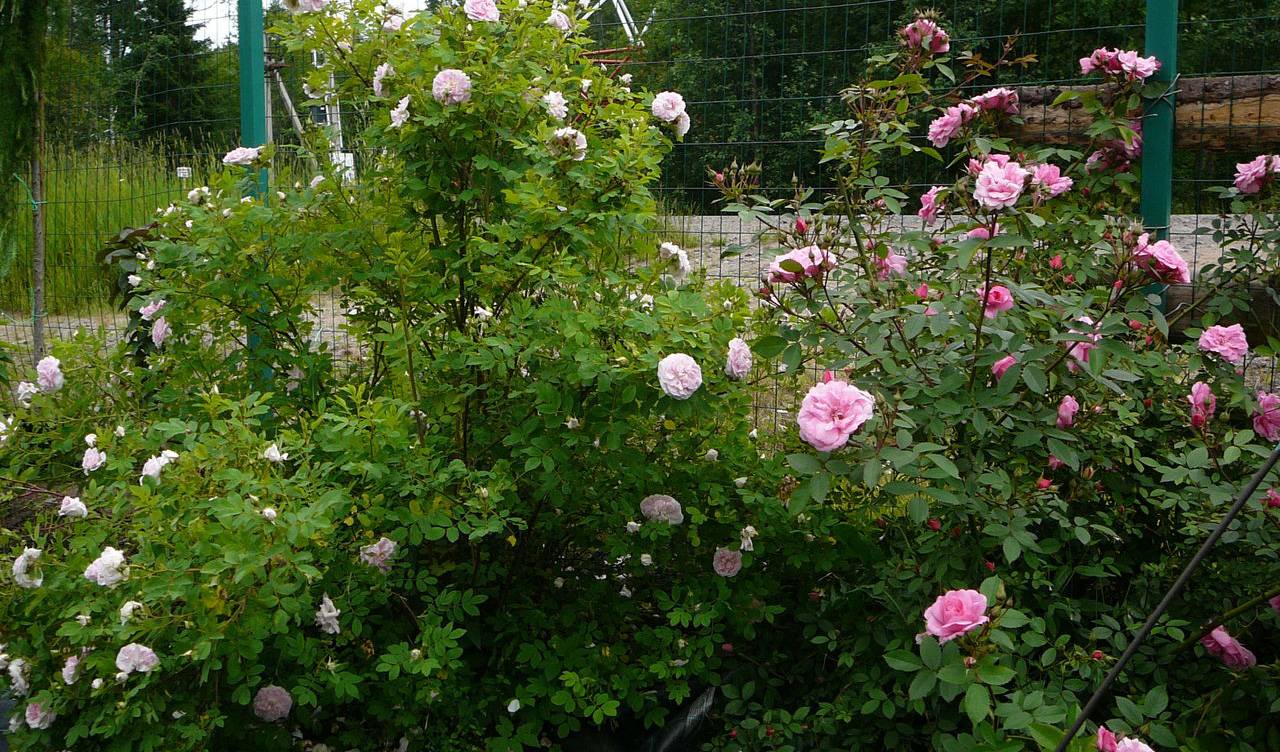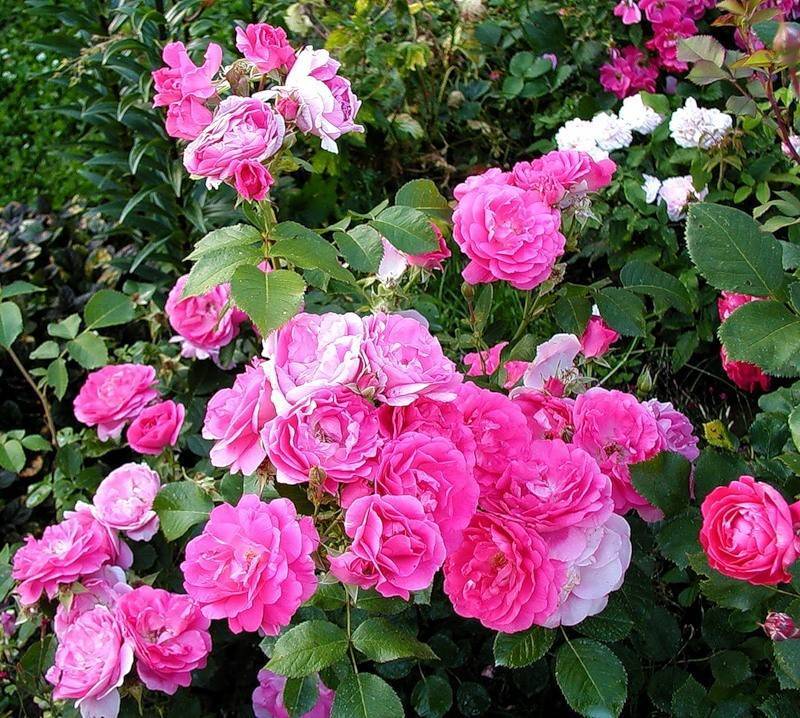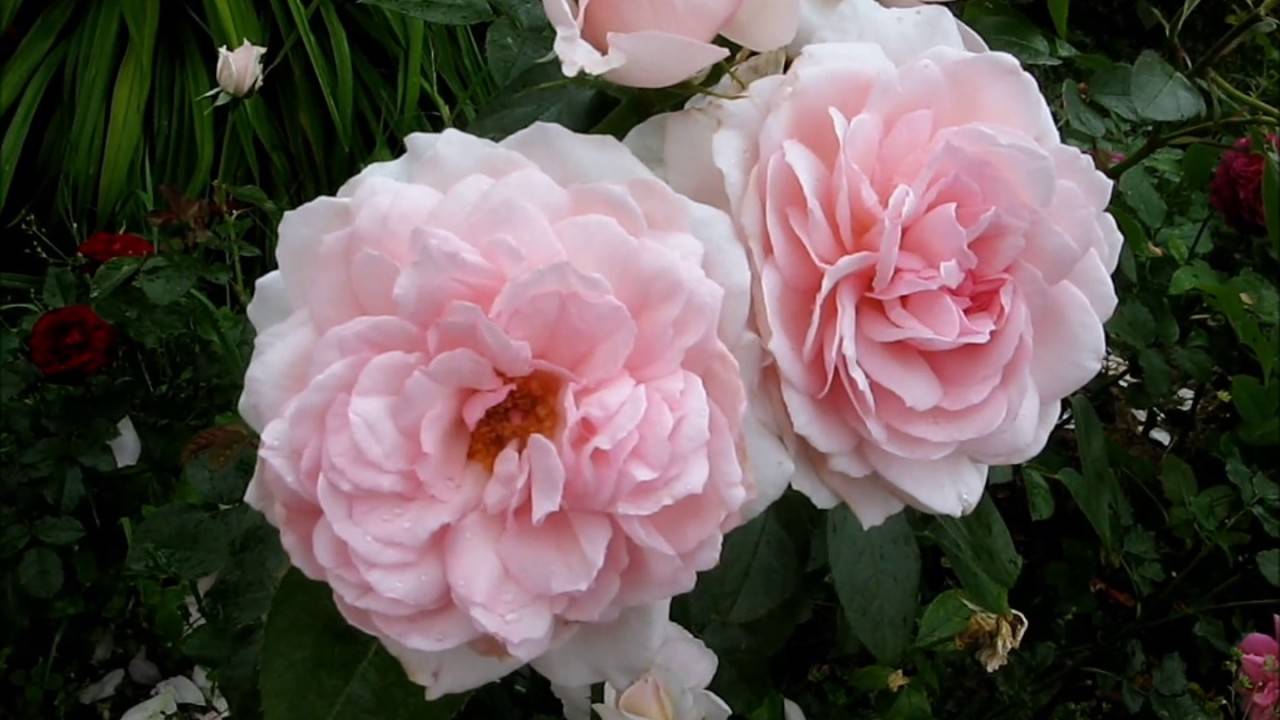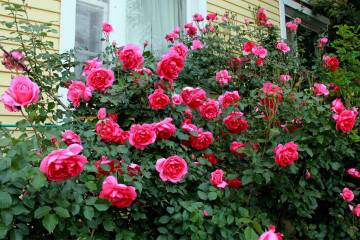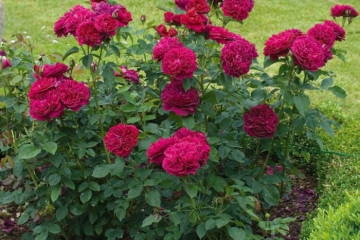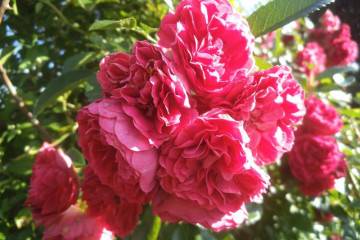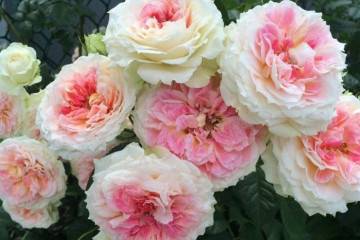Rose Martin Frobisher - description of the variety
Content:
Rose Martin Frobisher, or simply Martin, is distinguished by a delicate pale pink color, unsurpassed grace and a light pleasant aroma. This variety goes well with other plants, is unpretentious in care, therefore it is very popular among gardeners.
Rose Martin Frobisher - what is this variety, history of creation
Rose Martin Frobisher belongs to the Explorer species, which were bred in Canada in the 20th century as frost-hardy plants. The breeding of these hybrids was carried out by Felicia Sweida. The Explorer series has about 20 varieties. They are also called Canadian roses. Rose Martin Frobisher is one of the first and best representatives.
The Explorer series flowers were named after famous sailors. The navigator Martin Frobisher traveled a lot in the 16th century and once found himself in North America, where Canada is now located.
The selection of the variety lasted until 1962, the successful completion of which was the frost-resistant Canadian park rose Martin Frobisher.
Brief description, characteristic
Rose Martin flower has a delicate light pink hue, the outer side of the petals is white. The central part of the flower has a richer shade of pink. This makes it unique among other colors. The diameter of the flower is about 6 cm, the number of petals is about 60.
The buds grow in the form of brushes of 4-5 pieces each. The flowering period of each flower is short, but new and new buds constantly appear on the bush, so the bush always looks attractive.
The bush reaches a height of 175 cm, grows up to 50 cm wide, has a beautiful shape, looks harmonious. The stems are straight, have a reddish tint, without thorns, the foliage is dense, green.
Advantages and disadvantages of the variety
Like every variety, the Martin Frobisher rose has its own pros and cons.
The advantages of this variety:
- high frost resistance;
- beautiful, harmonious bush shape;
- attractive appearance and pleasant aroma;
- the possibility of obtaining a large number of bushes from one purchased seedling;
- continuous flowering in summer;
- unpretentious care;
- lack of thorns and convenience for creating bouquets and flower arrangements;
In addition, this variety tolerates temporary drought without problems. However, excellent flowering can be achieved if you ensure timely watering and proper feeding.
The disadvantages include:
- the need to prophylactically spray the plant;
- fragility of the flower;
- the need for regular pruning.
In addition, this variety is very picky about weather conditions. For example, in the rainy season, the buds rot and the bush does not bloom. In the shade, it will not work to achieve flowering either. And on hot sunny days, the petals can quickly crumble.
Use in landscape design
Park rose Martin Frobisher is often used in landscaping to create a living arch, to decorate plots and gardens. It is planted near a gazebo or terrace, and is also used to make living figures.
Growing a flower, how to plant it in open ground
Canadian park rose Martin Frobisher is unpretentious in care. But in order for it to bloom for a long time and magnificently, it is necessary to ensure that it has the correct landing.
In what form is the landing
You can buy a rose seedling online or in a store. This plant takes root well, does not require much attention. In one season, a full-fledged bush grows from a seedling, from which several shoots can be cut in autumn and propagated by cuttings.
You can plant a rose anywhere: in an open area, where the sun shines all day, and in partial shade. It is necessary to prepare slightly acidic soil. A mixture of sand, humus, ash and soil is perfect.
Planting procedure step by step
When the location is selected, the soil is prepared, you can start planting.
Stages of the landing procedure:
- Dig a hole measuring 90 cm by 90 cm.The depth of the hole is 60 cm.
- Water the well abundantly.
- Lower the seedling into a hole at least 5 cm from the ground level so that rosehip shoots do not appear on the stock.
- Bury the seedling and compact the soil.
Mulching the near-stem part will help retain moisture and prevent weeds from growing. In addition, there will be no need to regularly loosen the soil.
Plant care
Caring for a rose bush involves regular watering, timely application of the necessary fertilizers, and correct pruning.
Watering rules and humidity
The rose bush has a large and dense root system that sits deep in the ground, so watering requires a lot of water. Watering should be carried out 1-2 times a week, at least 20 liters for each bush. Water the plant in the morning or evening. In a hot period, watering should be done more often than usual.
To retain moisture, the plant is mulched. But too thick a layer of mulch is the cause of waterlogging and the spread of diseases. The best material for mulching roses is tree bark, it is good for air and water.
Top dressing and soil quality
When planting a plant, humus and mineral fertilizers need to be added to the hole, then at first the bush does not need additional feeding. Next, potassium-phosphorus fertilizers should be applied throughout the flowering period every three weeks.
50-60 days before the onset of cold weather, fertilization should be stopped in order to slow down the growth of young shoots that cannot withstand the frosty winter.
Pruning and replanting
Regular pruning is essential. Pruning rules depend on the season:
- In the spring, you need to cut off all dry shoots, leave only live, strong, only 5-6 pieces. Each of these shoots must also be pruned to the seventh bud.
- In the summertime, regularly prune dry flowers to give the bush a presentable appearance. Thin, weak shoots with few buds should also be pruned to allow the stronger branches to grow stronger, giving abundant flowering.
- In autumn, cut off all young green parts of the plant, and also get rid of sick and weak shoots.
After 7 years, before the onset of frost, the rose bush must be cut off completely. Root pruning will rejuvenate the plant, and in the spring new strong shoots will appear, which will produce a large number of buds and flowers.
Features of wintering a flower
Before the onset of cold weather, the plant must be properly cut, the shoots must be pressed to the ground using special slingshots, the bush must be buried in soil with compost. To insulate the rose bush additionally with hay, straw, and in severe frosts - with burlap or film.
Blooming rose
The rose bush blooms continuously from early summer to the very frost. The period of activity begins in mid-spring and lasts until late autumn. In winter, the bush should be insulated.
Care during and after flowering
During flowering, it is important to carry out regular watering, pruning, and top dressing. After flowering, the bush must be properly cut and prepared for the winter cold snap.
What to do if it does not bloom, possible reasons
If the bush does not bloom, you should check its location. If it is planted in a too shady corner or grows in direct sunlight, you should transplant the plant to another, more suitable place for it.
Autumn pruning can also improve the situation, and in the spring the bush will start up young shoots and bloom.
Flower propagation
Many shrubs can be grown from one seedling purchased from a specialized store. The most suitable way to propagate roses is by cuttings.
A young one-year shoot 25-30 cm long must be carefully cut with a sharp knife and all the leaves removed from it, leaving only the upper ones. Then dig a hole 25 cm deep and insert a branch into it so that only the leaves that remain on the branch are visible.
The plant needs to be watered abundantly and insulated with a plastic bottle. Cover the bottle with earth during frost. When it starts to warm, the soil should be removed, the lid should be unscrewed. After buds appear on the shoot, it is better to completely remove the bottle. Over the summer, a beautiful bush will turn out from this cutting.
Diseases, pests and ways to control them
Rose Martin Frobisher is quite resistant to diseases and pests. But with improper care or in adverse weather conditions, the plant may suffer. If mold appears on the buds, you need to cut off the affected parts and make an infusion of onion peels to spray the entire bush.
Copper-based preparations Topaz and Forecast help get rid of powdery mildew.
For preventive purposes, the plant should be sprayed from time to time with drugs:
- Fufanon;
- Karate;
- Commander.
Rose Martin Frobisher can become a permanent decoration of a garden or plot if properly cared for. A beautiful delicate flower will bloom profusely and delight others with its tenderness and aroma.

